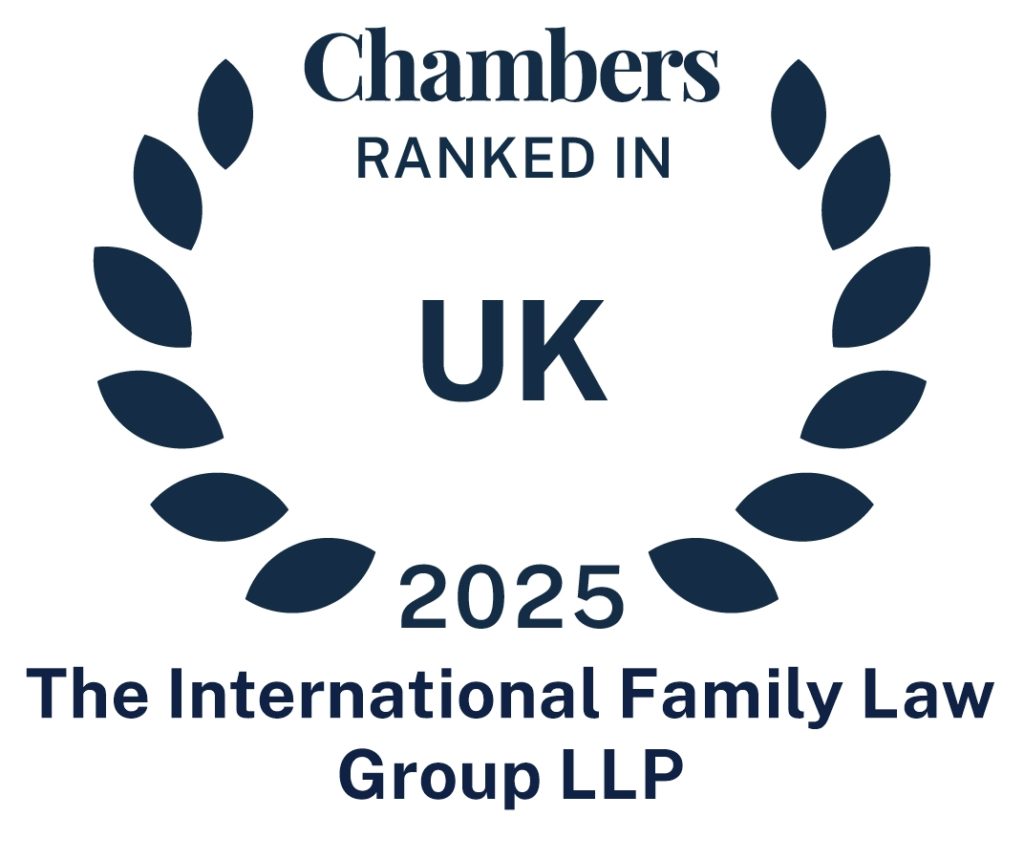In May 2008 I wrote an article anticipating what would be family law and the practice of family law a decade or more hence, May 2020. Would I have perfect vision of a fair family law 12 years later or would some of the problems still be with us?
I have just come across my article and am reflecting on what has happened and what decidedly has not occurred.
The dangers of looking forward: the vision in May 2020
Anyone endeavouring to forecast the future faces the risk that the future arrives very differently to the forecast. George Orwell in 1949 forecast 1984 and I well remember rereading the book on New Year’s Day 1984 when life was fortunately so different. 2001 Space Odyssey has yet to create Hal. One looks back at the original Blade Runner set last year, in 2019, the original Mad Max set in 1994, Back to the Future Part II in 2015 and then of course 2019: After the Fall of New York was a little premature.
So, there is a distinct lack of wisdom for any who try to forecast. Nevertheless, with wisdom cast to the corners of the following decades, I attempted this in May 2008. The reason at the time is irrelevant now. But I hope I had as good a knowledge of what was happening in family law practice and family law reform as any other solicitor at the time and some forecasts have proved spot on, some have shown themselves to be historical dead ends and on others we are sadly still waiting.
What is particularly of interest having just discovered this article again during this period of coronavirus is how much change these couple of months would have accelerated in the progress of family law and family law practice. So where did I get it right? Where did I get it stunningly wrong and perhaps why? And on what are we still waiting?
May 2008 forecast for May 2020
Within the law office, meetings with clients are a rarity, replaced by video conferencing and video mails. The infrequent hearings at court which remain after the dramatic changes in law and procedure are most often conducted by video links, with judges, advocates and clients in separate locations. This saves travel, time and costs. Lawyers no longer need to be close to the court room nor to the centres of communities. Most family law work is undertaken in a few large centres around the country. This was occurring in a small part before March 2020 but will undoubtedly accelerate throughout the rest of this year when we return from the lockdown. My firm obviously ‘sees’ our international clients by videoconferencing already but I forecast for many law firms this will now extend to national clients. There will still be an important role for the face-to-face meeting, particularly the initial meeting and when major decisions will be needed. But most will now be by video. Similarly many more court hearings will be conducted remotely when lawyers and clients realise the cost savings and the efficiencies. The debate now is when a face-to-face hearing is needed. We now have centralisation of the family courts with many court closures and this will undoubtedly continue and increase. Because the client video meeting and the remote hearing have not yet occurred as I expected, the change in legal practice has not yet occurred as I anticipated, but I’m certain it will; the inevitable consequence of the significant change in family law services and family justice.
The qualification of being a solicitor had become increasingly devalued and cases with any complexity are only dealt with by accredited lawyers who meet the highest standards of the resolution accreditation scheme. I was one of the originators of the family law accreditation scheme in England and Wales. I had seen first-hand how well it had worked in Australia. Sadly and regrettably, it hasn’t taken off in England. Very few personal clients choose their family lawyer because they are or are not accredited.
There are just a few conventional partnerships remaining. The most dramatic change was that ownership of law firms passed from the exclusive preserve of lawyers. Many law firms had been purchased, or simply taken over because of their debts in struggling to cope with the costs of technology, by some local companies, a number of national companies and by international corporations. The public had uniformly welcomed these changes and felt much more comfortable dealing with recognised brand names. I fully admit to being surprised that this has not occurred. We have seen it in other professions, which caused me to anticipate the legal profession would be no different. It has happened a little in some areas of work but not family law. Whether the impact of the coronavirus causes a shakedown will be a matter for the next few months. That apart, this change doesn’t now seem imminently likely.
Typists ceased to be employed many years ago; lawyers operate their own digital dictation. Personal assistants had quickly become paralegals and had taken over a considerable amount of the day-to-day work. This was a forecast from experience. I have used digital dictation since 2005; who needs the typist? The pure typist was redundant ages ago; their role has changed significantly within law offices. The lawyer/PA ratio continues to get higher and higher. Paralegals are crucial for the future. With family law work being increasingly digital, a family law practice will only survive with good long-term paralegals.
Successive governments had grown weary of trying to make legal aid work within private practice. It is now all undertaken by public offices employing lawyers and paralegals in key centres around the country, receiving instructions from customers, specifically no longer called clients, in video booths in community centres. The first sentence is undoubtedly the case. Governments washed their hands of legal aid work and its cost many years ago. But what hasn’t happened is the obvious replacement as I forecast. It is still legal aid lawyers valiantly continuing at meagre remuneration. Everyone forecasts the breaking point will occur soon. But too many simply say there should be better remuneration for legal aid lawyers. I can’t see that happening. There should be a proper replacement. But what?
Public law children work had been recognised as a particularly costly drain on public resources. It had been taken out of the court system, save for exceptional cases and appeals, and is now heard within tribunals with relaxed rules of evidence, non lawyer chairs, and specifically cutting back on the number of advocates attending. Well not yet in England but this is under discussion in Australia and also for private children work.
The number of collaborative lawyers giving up altogether any non collaborative law work had significantly increased. A new body persuaded the government and the Law Society that collaborative lawyers acting alone could thereby act for both parties on matters where there was no real conflict or possibility of proceedings. They now act in the reaching of pre marriage agreements and the division of assets on divorce. In 2008, collaborative law was the new sexy kid on the block. The next 10 years were not kind. The kid did not age well, did not maintain popularity or street cred. collaborative law is still being undertaken but rarely. But acting for both parties when no real conflict has happened. My firm was privileged to act pro bono in a case before Mostyn J late last year in which it was established that lawyers and others can assist both parties in the drawing up of a draft consent order and other non-contentious work. See article here. It will extend beyond drafting consent orders. The public wants it. This is likely to be a significant area of change in the near future.
Alternative dispute resolution, now known as PDR, primary dispute resolution, consists of a variety of models. Many specialist lawyers had become directive mediators, specifically helping the parties reach an agreement through a mixture of traditional mediation and early neutral evaluation. Every party has to attempt some form of PDR before they can commence court proceedings. In children applications, this includes compulsory education on the impact of parental separation on children. No one should ever make any predictions about ADR! It seems to be forecast proof. But this was surprisingly accurate. Parties must consider ADR with a meeting before commencing financial or children proceedings. Many experienced specialist lawyers offer private ENE which has been one of the big innovations in the last few years, certainly in central London. What I did not forecast is that in 2002 I would think about and originate the use of arbitration in family law, eventually becoming established through the IFLA Scheme and itself being the prompt for the private judging.
England bowed to pressure from Europe and introduced binding financial agreements including pre-marriage agreements. However, England still insists the parties have separate legal advice or alternatively consult a collaborative lawyer together. Continental Europe still enforces agreements without disclosure and separate representation, but each has agreed to recognise each other’s agreements! In May 2008 ‘Radmacher’ was just starting its long progress up to the Supreme Court in 2010 which gave us persuasively binding marital agreements. But unlike the civil law model, there must be opportunity for independent legal advice and disclosure. Continental Europe has distinctly not changed in its requirements. The preconditions for domestic agreements are one of the biggest gulfs around the world with European international laws giving binding impact to agreements without independence of advice or disclosure.
Alan Miller won his case to the European Court of Human Rights against the United Kingdom government. The European Court held English financial provision law was uncertain, unclear and unfair. In any event, a succession of conflicting higher Court decisions had left practitioners completely uncertain of the law on which to advise a settlement. Accordingly, the English government had abolished financial provision law and instead created a highly sophisticated computer software program. Upon entry of the relevant information by the couple, the electronic family court judge, as the system is known, produces an award which is binding. The implementation of this award is then carried out by collaborative lawyers acting for the parties. Only in certain exceptional and unusual circumstances, known as departure provisions, is there reference to lawyers and the family law courts, and then initially via binding family arbitration. There had been some resistance to the outcomes in a few hard cases but overall, the public had preferred the finality, speed and certainty of the electronic family court judges. I wish! I have been a long-term advocate of major reform of financial provision, especially reducing the discretionary element to create more certainty, alongside the use of computer-based programs to determine the outcome. Sadly, it has just not happened. Our justice system is still as strongly wedded to discretion of the higher judiciary as it was in May 2008. Even now there is judicial disagreement between the intuitive, more unfettered approach, described as lawless science, and the more forensic structured analysis. Regrettably, this area has not had reform and desperately needs it as to both the law and application of technology. Draft legislation introduced many times into the House of Lords has come unstuck because of fundamental unfairness’s but some reform must occur.
Every member of society has an identity card. Vital information is incorporated within the card. Decrees absolute of divorce ceased to exist on paper as the family court judge makes the necessary change electronically to the ID records of the parties. Our society has strongly resisted any identity cards or similar. Certainly, divorce orders are now electronic but that’s all. Looking elsewhere in the world, we should be very pleased that our digital freedoms have mostly remained.
After another colossal public debate, no-fault divorce was introduced but specifically on the basis that it is dealt with in the family proceedings court, becoming an automatic process without any hearings. It requires a period of one-year notification and either party can give a notification to the court that the one-year period was commencing. To appease sections of the community, the notification can be given three times. Hopefully, we will have no-fault divorce very soon. But it seems it will be far shorter: six months rather than the one-year. Moreover, respondents will not have to be given notice until very late in the proceedings and will have sometimes only a couple of months’ notice of the final decree which is grossly unfair. The draft law has other faults. Having waited so long, it is unfortunate that we will not have a modern divorce law for the 21st-century.
Judges had become vociferous about parents who through intractable hostility made difficulties with contact. After a number of cases in which the primary residential parent had been sent to jail for refusing to comply with contact orders and when residence had been awarded to the other parent, contact orders became increasingly complied with. The new CSA has at last gained acceptance and operates through the Inland Revenue computer system which at last now actually works. A forecast which has completely failed! The intransigent parent who continually refuses contact is at little risk of prison or of change of primary residence. The father’s lobby continues to be rightly dissatisfied. A new CSA is a misnomer because it has been reinvented countless times since 2008 and still not gained acceptance and still not working with any professional acceptance!
After many protests about the law, there was a statutory change to the relocation law giving greater weight to the family life of the left behind parent and grandparents, making international relocations much more difficult especially for lifestyle reasons. English law had got stuck with the case of Payne giving, in effect, an entitlement to the residential parent to relocate in almost all circumstances. At last with CK v MK in 2011 an appropriate balance was restored.
The Hague Conference Child Abduction Unit had set up a global policing arrangement to deal with, ‘name and shame’, those countries who regularly breached their Hague Convention Child Abduction obligations. Moreover, an international court sits in each continent to deal with Child Abduction cases, comprising a couple of permanent judges and rotating national family court judges who then go back to their own domestic courts, thereby producing higher standards and consistency. Another forecast which completely failed. There are still too many 1980 signatory countries, including within Europe, which breach the obligation for summary return. Even the EU with its obligations in respect of Child Abduction in Brussels II has failed to bring the worst offenders into line. The prospect of an international court is as remote as 2008. Indeed, questions have been asked about whether the 1980 Convention needs revisiting given the shortcomings and notwithstanding the phenomenally successful work of return of abducted children. It’s safe to forecast this will be a matter of debate over the next decade.
Although Brussels refused for many years to give way on the first to issue principle, the European Union eventually accepted new rules on jurisdiction of divorce across Europe, giving first priority to agreements, and then a hierarchy of jurisdiction based on different forms of connections so there was no doubt which country had the closest connection to deal with the affairs of a family. By this device, there was no further debate on applicable law. No, it didn’t. A few years ago the EU conceded that the race to court was a problem in practice although they said it was chiefly an English problem; simply because people raced to the English courts because we were very fair, some would say generous. They contemplated a hierarchy of jurisdiction, invited us in the UK to put proposals which we did, and then they decided against reform. The existing law remains. What was not forecast was the disenchantment with the EU would lead to the UK leaving.
A major success story from Europe had been the introduction of reciprocal enforcement of maintenance and other (non ‘maintenance’) family Court financial orders, automatically recognised across Europe and many other countries, and directly enforceable against foreign real property, foreign banks and foreign employers etc. This arrived in June 2014 with the EU maintenance Regulation and, once the UK leaves the EU, with reliance on the 2007 Hague maintenance Convention and possibly the Lugano Convention.
The European system of family law had become so successful that several westernised countries outside of Europe had joined, creating a unified family law jurisdiction across much of the developed world. No it wasn’t and no they didn’t. In the intervening years since 2008, the EU unacceptably overstretched itself. It imposed laws e.g,. limitation on jurisdiction, on member states for cases with no intra-EU element. It refused the opportunity of member states to enter into accession to international treaties with third countries unless the EU approved and joined en-masse. It continued to produce laws which were thoroughly civil law based without any real nod to common law member states. There was no policing of the failures of the family justice systems in some member states yet more efficient and fast member states had to go slowly as the slowest. No country would want to join such a system of law.
Space travel had become more frequent and The International Family Law Group had become the first family lawyers to set up an extra terrestrial office, on Venus. Sadly not. The whole space race had come to an end. Maybe one day we will set up the office there but not in the next decade.
Conclusion
So the scoresheet shows some notable forecasts and some complete failures! Always the way. No one has perfect 2020 vision and especially in the context of family law and family law practice. But more is happening now than even a couple months ago. For those of us keen to see innovation and development, there are some good portents. But the conservative nature of the legal profession, the slow progress within the justice system and the adherence to conventional elements of the common law mean that change will not happen quickly, alas. Perhaps the lockdown extending into several months more may prompt me to forecast for 2030.
But at least some forecasts are still out there. The original Terminator was set in 2029. Who would give Skynet the opportunity to run a global family law system? Perhaps more compelling is to wait until the year 4000 for Barbarella..!
Prof David Hodson OBE MCIArb
[email protected]
The International Family Law Group LLP
www.iflg.uk.com
© May 2020
- Prof David Hodson OBE KC(Hons) MCIArbhttps://iflg.uk.com/team/prof-david-hodson-obe-kchons-mciarb
- Prof David Hodson OBE KC(Hons) MCIArbhttps://iflg.uk.com/team/prof-david-hodson-obe-kchons-mciarb
- Prof David Hodson OBE KC(Hons) MCIArbhttps://iflg.uk.com/team/prof-david-hodson-obe-kchons-mciarb
- Prof David Hodson OBE KC(Hons) MCIArbhttps://iflg.uk.com/team/prof-david-hodson-obe-kchons-mciarb











